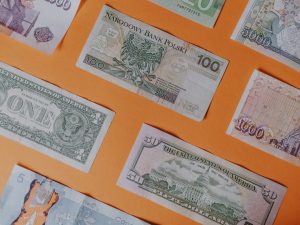Forex, or foreign exchange, is the largest financial market in the world, with an average daily trading volume of around $5 trillion. It involves the buying and selling of currencies, and traders can make profits by speculating on the fluctuations in exchange rates. However, as with any form of trading, there is a risk involved, and it is essential to calculate this risk before placing any trades.
Calculating risk in Forex involves determining the potential loss that a trader could incur if their trade goes against them. This is known as the ‘stop-loss’ level, which is the price at which a trader will exit their position if the market moves in the opposite direction to their trade. The stop-loss level is a crucial part of risk management in Forex trading, as it limits the amount of money that a trader can lose on any given trade.
To calculate the stop-loss level, traders need to consider a few key factors. The first is the size of their trading account, as this will determine the maximum amount they can risk on any one trade. A general rule of thumb is that traders should not risk more than 1-2% of their account balance on any single trade. For example, if a trader has a $10,000 account, they should not risk more than $100-$200 on each trade.
The next factor to consider is the currency pair being traded, as each pair has its own volatility and average daily range. Volatility refers to the amount of price movement in a particular currency pair, and it can affect the size of the stop-loss level. Generally, more volatile pairs will require a wider stop-loss level to account for the larger price movements. For example, the GBP/USD pair is typically more volatile than the EUR/USD pair, and therefore may require a wider stop-loss level.
The average daily range is another important factor to consider when calculating risk in Forex. This refers to the average amount that a currency pair moves in a day, and it can help traders to determine how much they are likely to gain or lose on a trade. It is important to note that the average daily range can vary depending on market conditions, so traders should regularly monitor this to ensure their stop-loss levels are appropriate.
Once the trader has determined the maximum amount they can risk and the appropriate stop-loss level for the currency pair being traded, they can calculate the position size. Position size refers to the number of units of a currency pair that a trader will buy or sell on a trade. It is calculated based on the trader’s account balance, the stop-loss level, and the price of the currency pair. A common formula for calculating position size is:
Position size = (Account balance x Risk per trade) / (Stop-loss level x Pip value)
The pip value refers to the smallest increment in price movement for a currency pair, and it varies depending on the currency pair being traded and the currency in which the account is denominated.
For example, if a trader has a $10,000 account and wants to risk 1% on a trade with a stop-loss level of 50 pips on the EUR/USD pair (which has a pip value of $10), the position size would be:
Position size = ($10,000 x 0.01) / (50 x $10) = 2
This means that the trader can buy or sell 2 units of the EUR/USD pair on this trade.
In summary, calculating risk in Forex involves determining the appropriate stop-loss level based on the trader’s account balance, the volatility and average daily range of the currency pair being traded, and the pip value. Traders should aim to risk no more than 1-2% of their account balance on any single trade, and regularly monitor market conditions to ensure their stop-loss levels are appropriate. By effectively managing risk, traders can minimize their losses and increase their chances of success in the Forex market.






